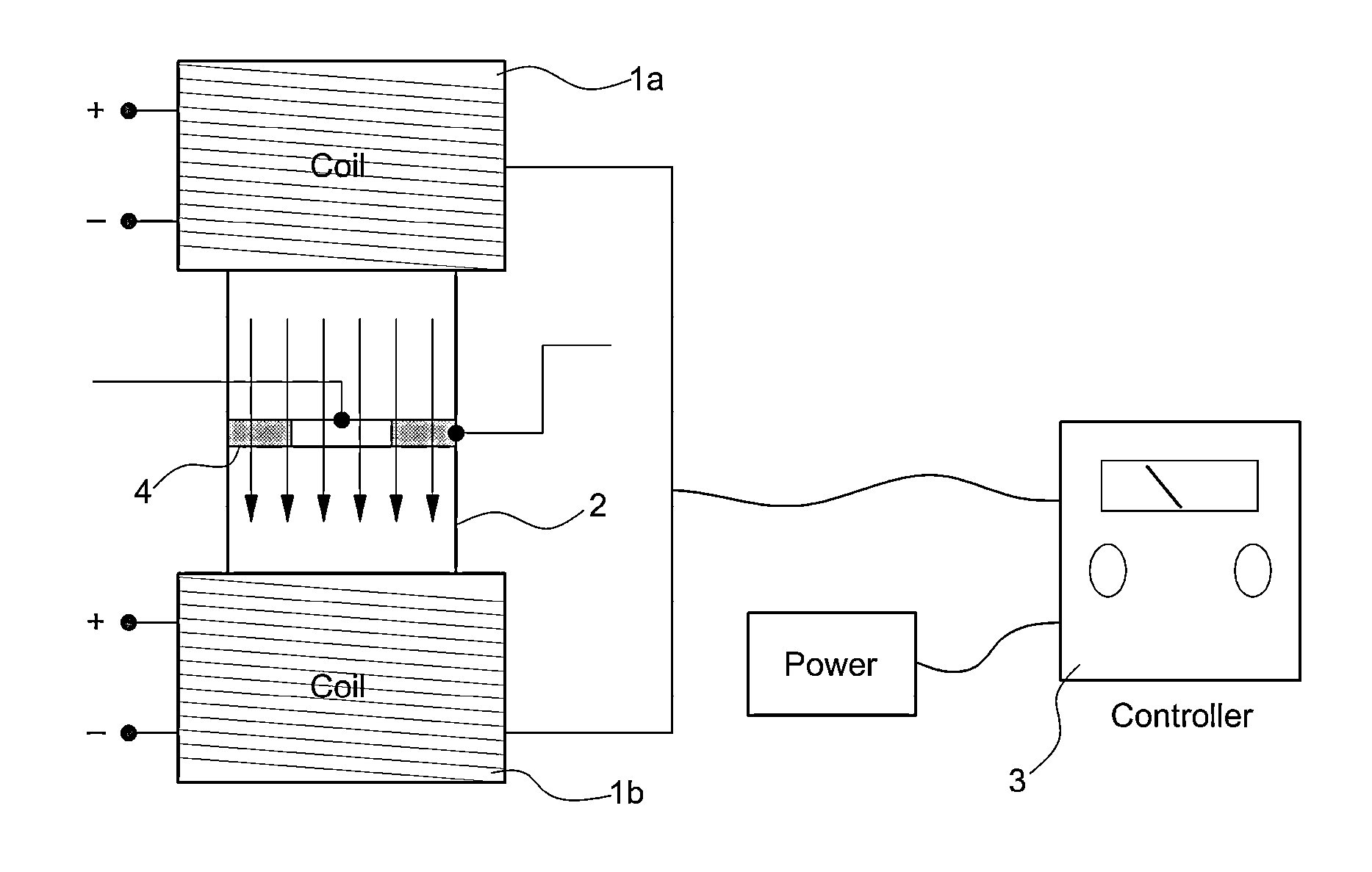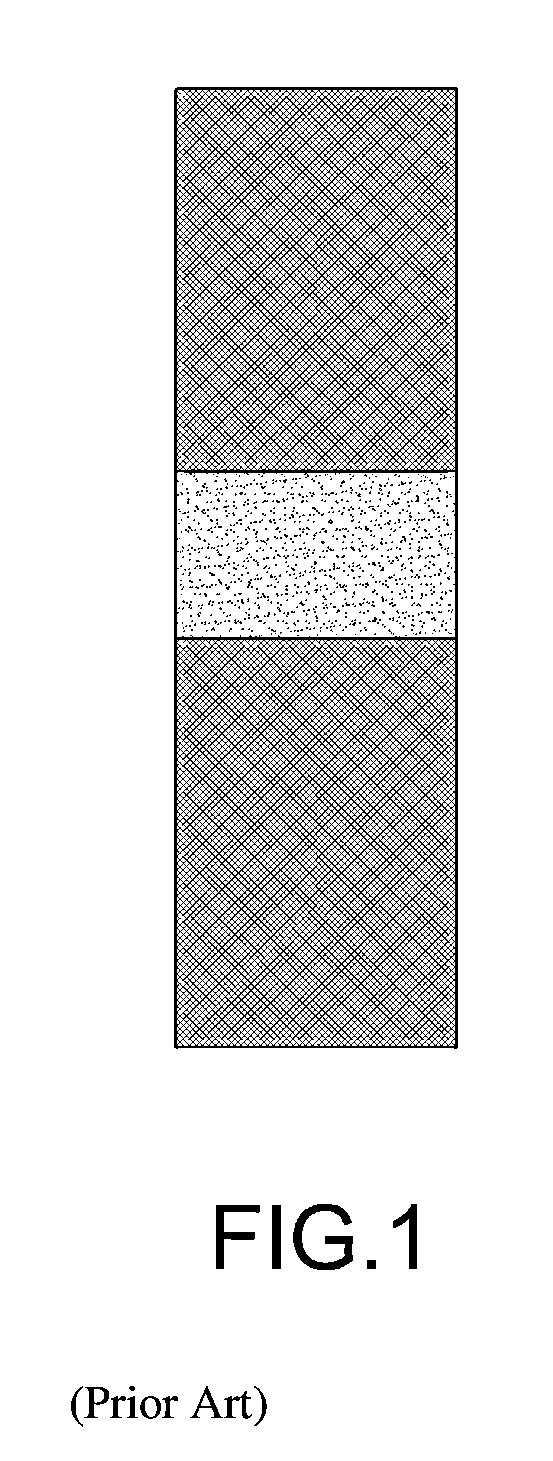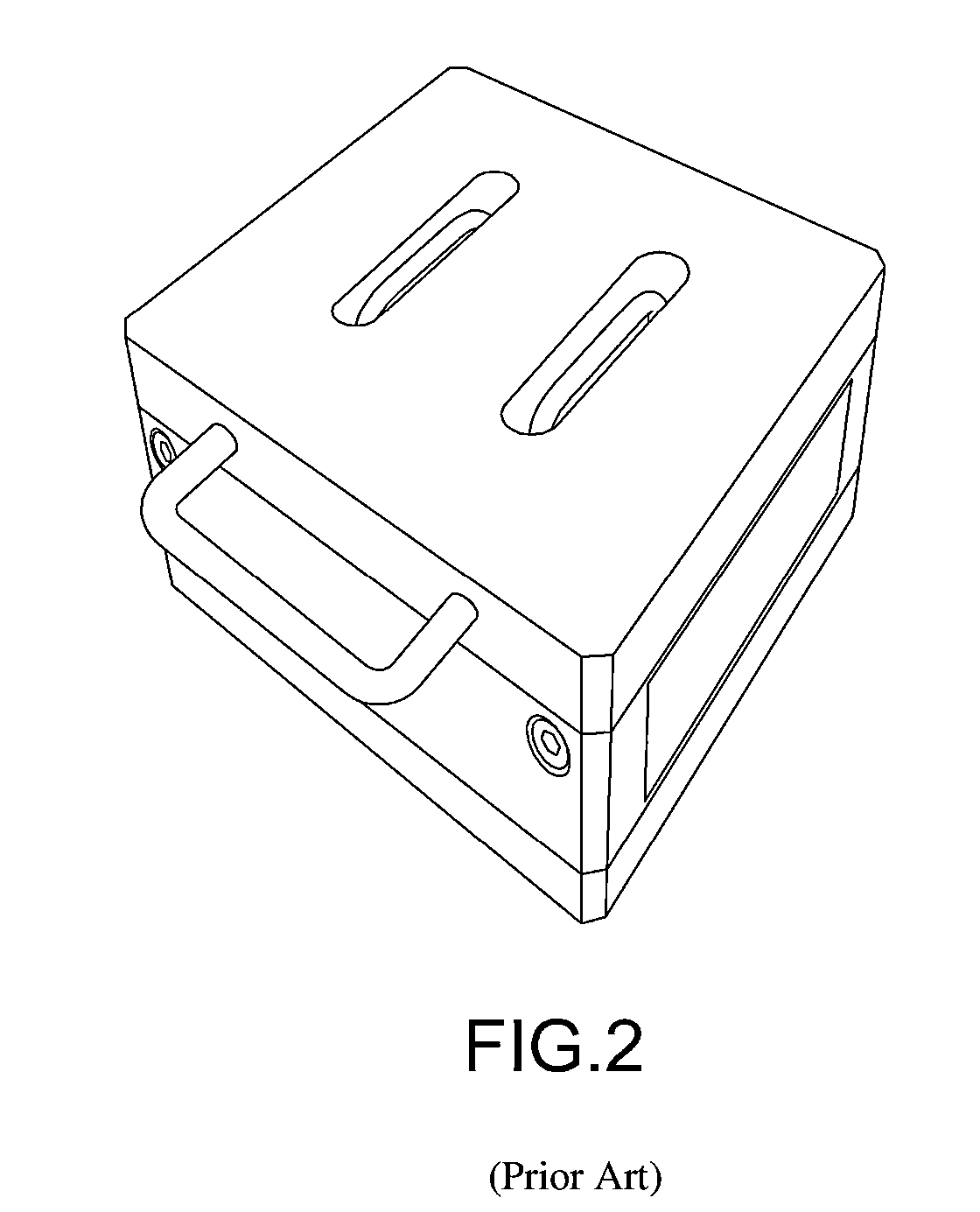Method and apparatus for manufacturing a magnetorheological elastomer
a technology of magnetorheological elastomer and method, which is applied in the field of electromagnetically controlled devices for manufacturing anisotropic magnetorheological elastomers, can solve the problems of reducing the physical properties of the magnet, difficult to separate the magnet, and difficult to obtain a magnetic field strength of 0.5 tesla or more, so as to achieve the effect of reducing the strength of the magnetic field, reducing the difficulty of cip orientation, and reducing the difficulty
- Summary
- Abstract
- Description
- Claims
- Application Information
AI Technical Summary
Benefits of technology
Problems solved by technology
Method used
Image
Examples
example 1
[0066]Natural rubber used as a matrix, various kinds of additives, and CIP were roll-milled to provide a rubber compound. The rubber compound was firstly molded in a hydraulic press (100° C.) for a scorch time or less so as to provide a sheet with a thickness of 2 to 4 mm. Herein, it is important to control the processing condition in such a manner that scorching (that is, curing) of the matrix cannot be proceeded. The first molded product, remaining in the mold, was positioned in an electromagnetic device. Then, under an optimum process condition set in the present invention, that is, at 200 V for 15 min, a second molded product was manufactured by inducing the orientation of CIP. Finally, the second molded product was cured in a hydraulic press (set temperature: 160° C.) for an optimum curing time measured by a rubber rheometer so as to manufacture a final anisotropic MRE.
example 2
[0067]Natural rubber, additives, and CIP were blended through roll-milling in the same manner as described in Example 1. Then, the rubber blend was introduced into a hydraulic press without being applied with a magnetic field through an electromagnetic device, and cured for a final curing time measured by a rubber rheometer so as to manufacture an isotropic MRE having CIP particles randomly dispersed therein.
example 3
[0068]Magnetic responsive particles (CIP) were coated with a silane coupling agent by the following steps. First, an aqueous solution (Ethanol / Water=95 / 5) was added with acetic acid so as to provide a solution of pH 5, and then a silane coupling agent (A1130) was added in an amount of 2 vol % thereto, followed by stifling for 5 minutes so as to induce sufficient hydrolysis of the silane coupling agent.
[0069]Then, CIP was added thereto, followed by stirring for 3 minutes. The resulting mixture was dried at room temperature so that a silane-coated CIP was produced. In the silane-coated CIP, the condensation between a silanol group and CIP was achieved, and there remains a site reactable with natural rubber.
PUM
| Property | Measurement | Unit |
|---|---|---|
| thickness | aaaaa | aaaaa |
| thickness | aaaaa | aaaaa |
| temperature | aaaaa | aaaaa |
Abstract
Description
Claims
Application Information
 Login to View More
Login to View More - R&D
- Intellectual Property
- Life Sciences
- Materials
- Tech Scout
- Unparalleled Data Quality
- Higher Quality Content
- 60% Fewer Hallucinations
Browse by: Latest US Patents, China's latest patents, Technical Efficacy Thesaurus, Application Domain, Technology Topic, Popular Technical Reports.
© 2025 PatSnap. All rights reserved.Legal|Privacy policy|Modern Slavery Act Transparency Statement|Sitemap|About US| Contact US: help@patsnap.com



